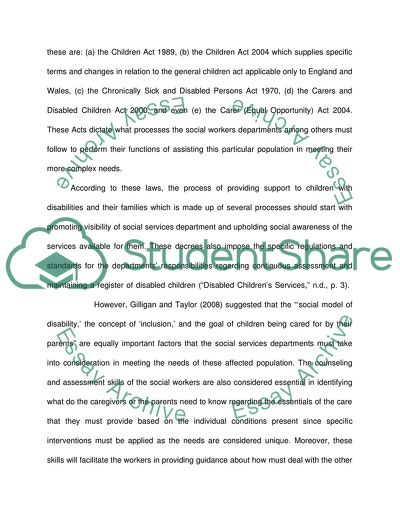Cite this document
(Social Services and Disabled Children Report Example | Topics and Well Written Essays - 1750 words, n.d.)
Social Services and Disabled Children Report Example | Topics and Well Written Essays - 1750 words. https://studentshare.org/social-science/1740261-what-social-work-services-need-to-be-available-to-meet-the-needs-of-disabled-children-and-their-parents
Social Services and Disabled Children Report Example | Topics and Well Written Essays - 1750 words. https://studentshare.org/social-science/1740261-what-social-work-services-need-to-be-available-to-meet-the-needs-of-disabled-children-and-their-parents
(Social Services and Disabled Children Report Example | Topics and Well Written Essays - 1750 Words)
Social Services and Disabled Children Report Example | Topics and Well Written Essays - 1750 Words. https://studentshare.org/social-science/1740261-what-social-work-services-need-to-be-available-to-meet-the-needs-of-disabled-children-and-their-parents.
Social Services and Disabled Children Report Example | Topics and Well Written Essays - 1750 Words. https://studentshare.org/social-science/1740261-what-social-work-services-need-to-be-available-to-meet-the-needs-of-disabled-children-and-their-parents.
“Social Services and Disabled Children Report Example | Topics and Well Written Essays - 1750 Words”. https://studentshare.org/social-science/1740261-what-social-work-services-need-to-be-available-to-meet-the-needs-of-disabled-children-and-their-parents.


